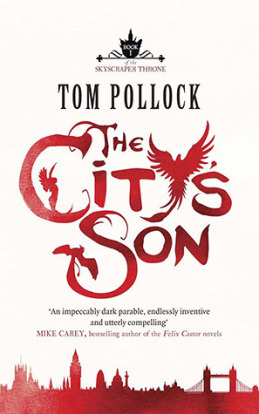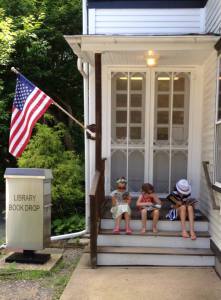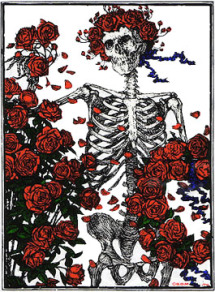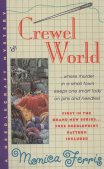Today we are traveling to Manhattan by way of Connecticut.
Mary O’Connell’s Dear Reader was a strange book. It could have been strangely wonderful, but fell just a tiny bit short for me.

Flannery Fields, our heroine with her very convenient literary name, feels out of place at Sacred Heart, her Catholic school in Connecticut. She sees all her classmates as clones of each other, proverbial “mean girls”. Her only solace comes in the form of books and her English teacher, Caitlin Sweeney. Then Miss Sweeney disappears. Flannery, armed with her credit card (for emergencies, naturally) and Miss Sweeney’s copy of Wuthering Heights, which has magically turned into a real time diary of its owner, Flannery heads off to the Big Apple to hunt down her teacher. Her first stop is Columbia, Miss Sweeney’s alma mater and where Flannery herself will be attending in the fall, where she promptly meets Heath Smith, a handsome vagabond who may or may not have crawled out of the book Flannery is clutching to her breast. But, as her namesake knows, a good man is hard to find (I’m so sorry, I had to) so she and Heath soon find themselves partners in a madcap odyssey to find Miss Sweeney on the mean streets of the Upper West Side.
This book was very into location. It was very set in Morningside Heights and loved name dropping like whoa. First up is Columbia University itself, the center of activities, then to deli Nussbaum & Wu, then on to the Broadway Hotel and Hostel, Westsider Books, the Cathedral of St. John the Divine, and the Hungarian Pastry Shop across the street. This would be the perfect book to map because every place mentioned is real and within thirty-five blocks of each other.
The first thing I have to address is that this is definitely a piece of Young Adult fiction that would be most appreciated, and beneficial, to, well, Young Adults. The writing is not dumbed down, but it is simplistic. There are many literary references, but they are mostly surface, obvious, high school level references. As they should be. It is a book that often falls into its own cliches, while addressing them as such. Throughout, Flannery narrates her own story with a mind to the red pen her teacher would take to her thoughts. It’s a cute device for awhile, but eventually I had to wonder if they author was using it to mask her own skills.
The major theme here is finding your people. It’s a good theme, and translates well into the transition from high school, where Flannery feels like an outsider, to college, where she meets a group of exuberant book lovers who are named after literary figures (such as herself!) and wear faux mink stoles and cocktail dresses for a casual cup of coffee. There is a reason, I think, why teenagers portrayed in novels are generally precocious, well read, and lonely. And that’s because teenagers who are reading books for fun are generally precocious, well read, and lonely. So this novel speaks very well to them. There is more out there. There are people like you and you will eventually meet them. It’s uplifting and a good place to finish out this novel. However, I’m not sure if the rest of the book does its part of get us there.
There are two stories in one here. The first covers Flannery and Heath getting to know one another and searching for Miss Sweeney. The other is about Miss Sweeney herself as she leaves Kansas for New York, with her boyfriend in tow, and the eventual and inevitable implosion of their relationship. It’s a sad little tale, but never quite develops enough to give the reader any strong emotions about it. Heath, as well, was little more that literary device. He feels, throughout, intangible enough that it seems foolish to get too involved. We don’t know much about him, other than he comes from England and hints at a bad breakup. Not enough, unless we’re supposed to believe that he truly is Heathcliff walked out of the pages of Bronte and into modern days. The book never answers this definitively, which could be to its benefit but somehow isn’t. In the end he feels contrived, but still rather appealing. Actually, probably more appealing than Heathcliff would be if encountering him apart from Romantic sensibilities.
This book is described as Gilmore Girls meets magical realism. There is magical realism, for sure, and Flannery’s book toting ways could bring Rory Gilmore to mind. However, even season one Rory, fresh as a baby bird kicked out of its nest at Chilton, was far more world weary and willing to speak her mind against those higher than her one the social ladder, and would likely be more skeptical and more assertive if presented with real life Heathcliff. Though, I could be wrong; she always had terrible taste in guys (#TeamLogan).
This wasn’t a bad book, but it wasn’t a great one either. It exists in that betweenland where I can’t really recommend it, but I will likely remember it thanks to a larger than life plot and excessive literary references (I’m a sucker for them, especially Brontes). The biggest question I had going in was always my biggest question upon completion; if you’re going to write a book that heavily references Wuthering Heights, why title it after a reference from Jane Eyre?
Three out of five stars.
Advertisements Share this:





